In arrangement shown the block A of mass 15 supported in equilibrium by the block B. Mass of the block B is closest to
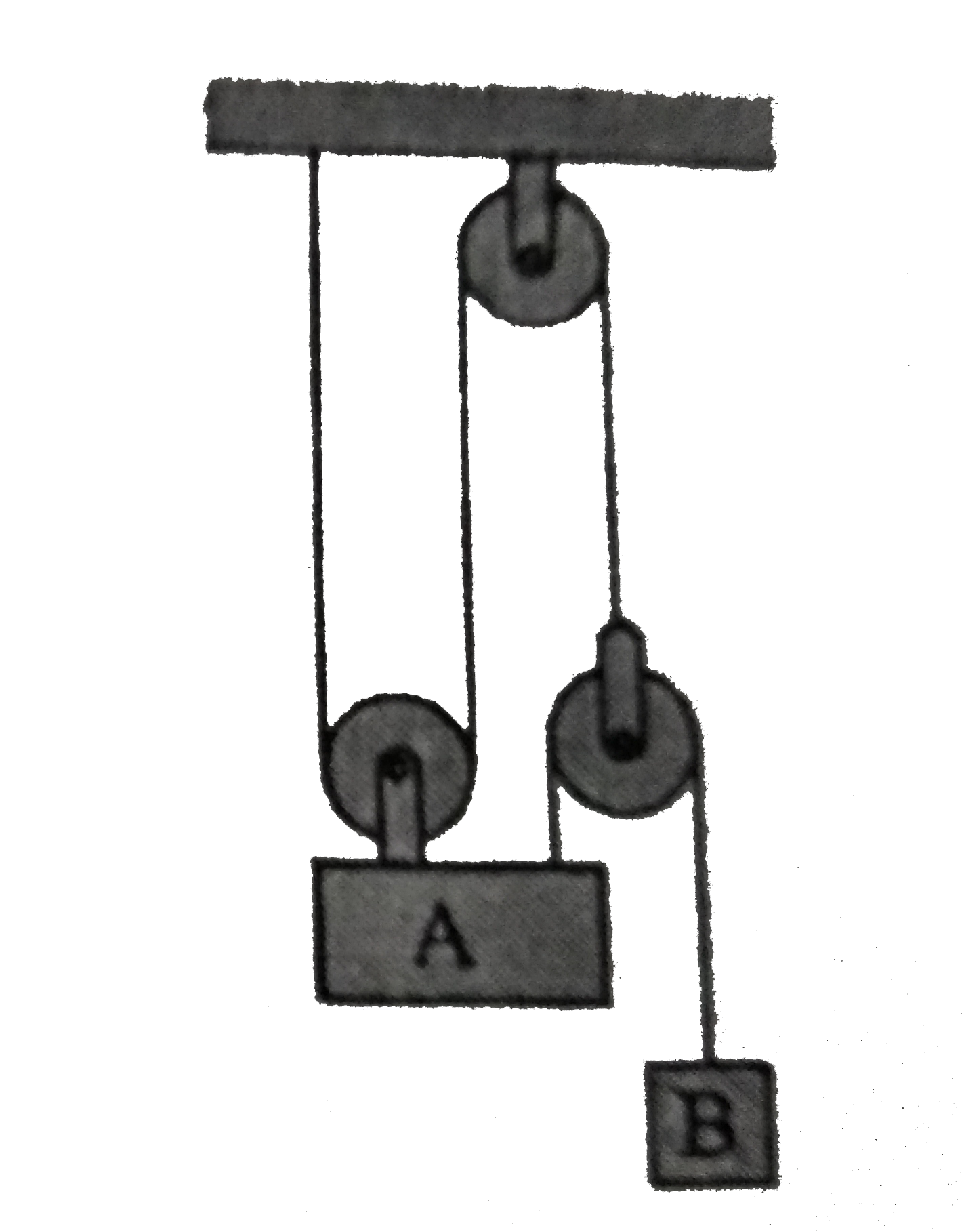
2 kg
3 kg
4 kg
5 kg
The correct Answer is:B
Step by step video, text & image solution for In arrangement shown the block A of mass 15 supported in equilibrium by the block B. Mass of the block B is closest to by Physics experts to help you in doubts & scoring excellent marks in Class 12 exams.
Topper's Solved these Questions
- BOOK - ALLENCHAPTER - NEWTON'S LAWS OF MOTION & FRICTIONEXERCISE - EXERCISE (O-2)31videos
NEWTON'S LAWS OF MOTION & FRICTION
- BOOK - ALLENCHAPTER - NEWTON'S LAWS OF MOTION & FRICTIONEXERCISE - EXERCISE (JM)6videos
NEWTON'S LAWS OF MOTION & FRICTION
- BOOK - ALLENCHAPTER - NEWTON'S LAWS OF MOTION & FRICTIONEXERCISE - EXERCISE (S-2)9videos
NEWTON'S LAWS OF MOTION & FRICTION
- BOOK - ALLENCHAPTER - MOTION IN A PALNEEXERCISE - SOLVED EXAMPLE28videos
MOTION IN A PALNE
- BOOK - ALLENCHAPTER - NEWTONS LAWS OF MOTIONEXERCISE - EXERCISE-III28videos
NEWTONS LAWS OF MOTION
Similar Questions
In the arrangement shown in the figure the system is in equilibrium. Mass of the block A is M and that of the insect clinging to block B is m. Pulley and string are light. The insect loses contact with the block B and begins to fall. After how much time the insect and the block B will have a separation L between them.
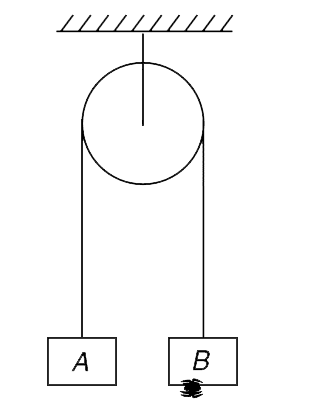 View Solution
View SolutionTwo blocks 'A' and 'B' having masses mA and ma, respectively are connectd by an arrangement shown in the figure. Calculate the downward acceleration of the block B. Assume the pulleys to be massless. Under what condition will block A have downward acceleration?
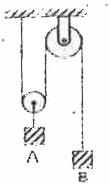 View Solution
View Solution
Knowledge Check
- Question 1 - Select One
In the arrangement shown, the blocks of unequal masses are held at rest. When released, acceleration of the blocks is
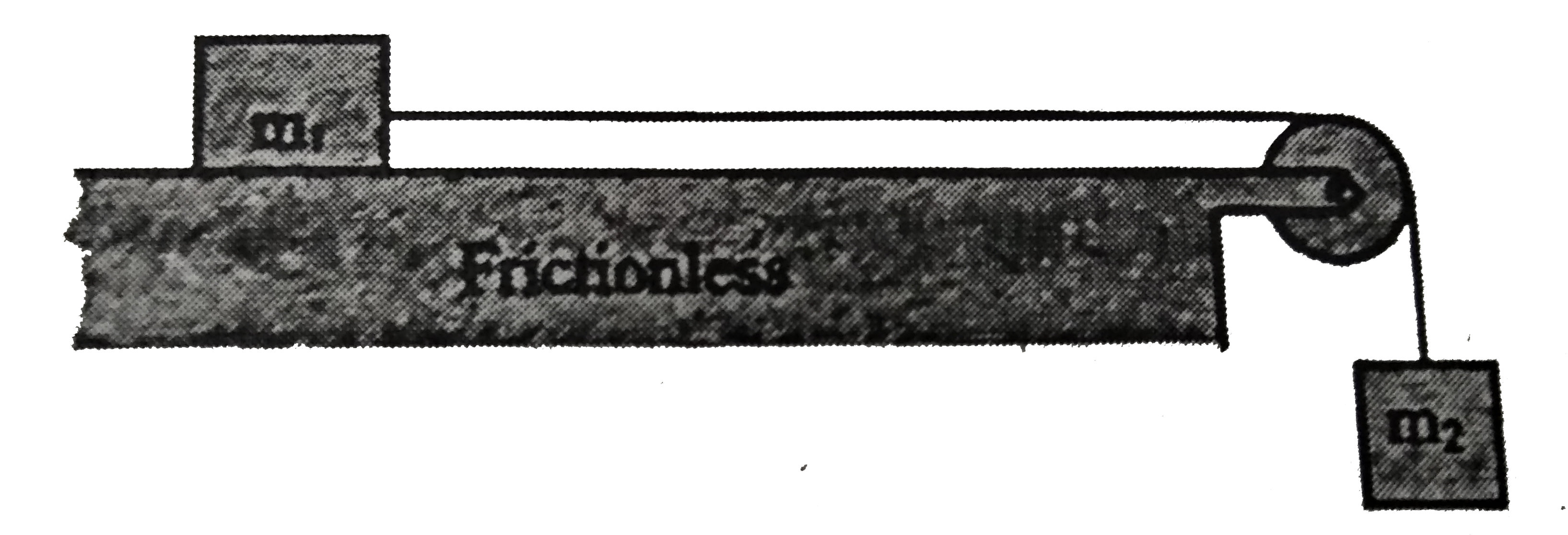 Ag/2.Bg.Ca value between zero and g.Da value that could be greater than g.
Ag/2.Bg.Ca value between zero and g.Da value that could be greater than g. - Question 2 - Select One
In the arrangement shown, velocity of block A is 10 m/s at a moment. Then the velocity of block B at this instant is :
 A10 m/sB20 m/sC16 m/sD25 m/s
A10 m/sB20 m/sC16 m/sD25 m/s
In the arrangement shown, the pulleys and the strings are ideal.The acceleration of the block B is
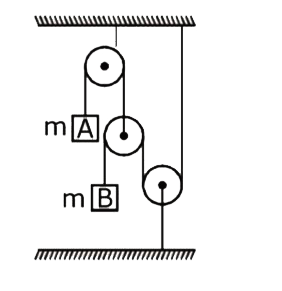 View Solution
View SolutionIn the arrangement as shown, block A of mass 3 kg moves towards left with velocity 10m/s. Initially block A is 100m from pulley on a smooth surface. Block B is of mass 2kg ( g=10m/s2 )
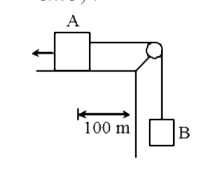 View Solution
View SolutionIn the figure shown the block A collides head on with another block B at rest. Mass of B is twice the mass of A. The block A stops after collision. The co-efficient of restitution is :
 View Solution
View SolutionA block A of mass 2m is hanging from a vertical massless spring of spring constant k and is in equilibrium. Another block B of mass m strikes the block A with velocity u and sticks to it as shown in the figure. The magnitude of the acceleration of the combined system of the blocks just after the collision is
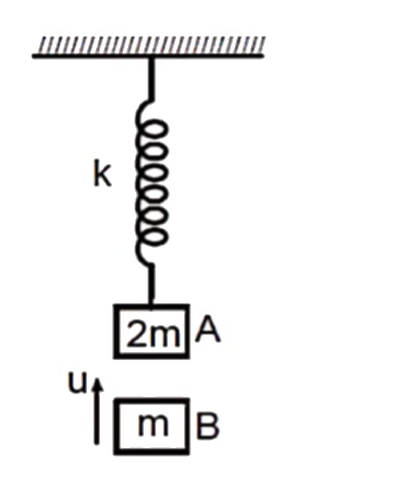 View Solution
View SolutionIn the arrangement shown in the figure, block B of mass M rests on a weighing scale. Ball A is released from a position where spring is in its natural length and the scale shows the correct weight of block B. Find the mass of ball A so that the minimum reading shown by the scale subsequently is half the true weight of B.
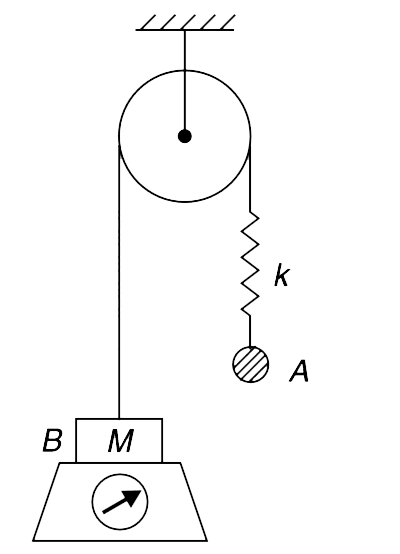 View Solution
View SolutionIn the arrangement shown in the figure, block A of mass 8 kg rests on a horizontal table having coefficient of friction μ=0.5. Block B has a mass of 6 kg and rests on a smooth incline having inclination angle θ=sin−1(25) . All pulleys and strings are mass less . Mass of block C is M .
[g=10m/s2]
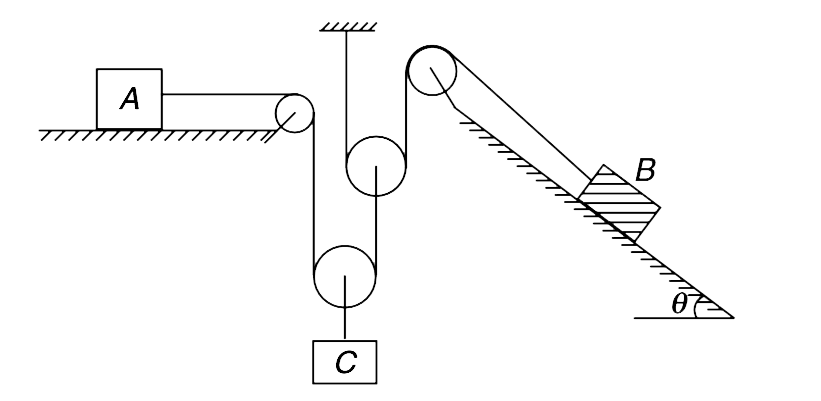
(a) Find value of M for which block B does not accelerate
(b) Find maximum value of M for which A does not accelerate.View Solution

